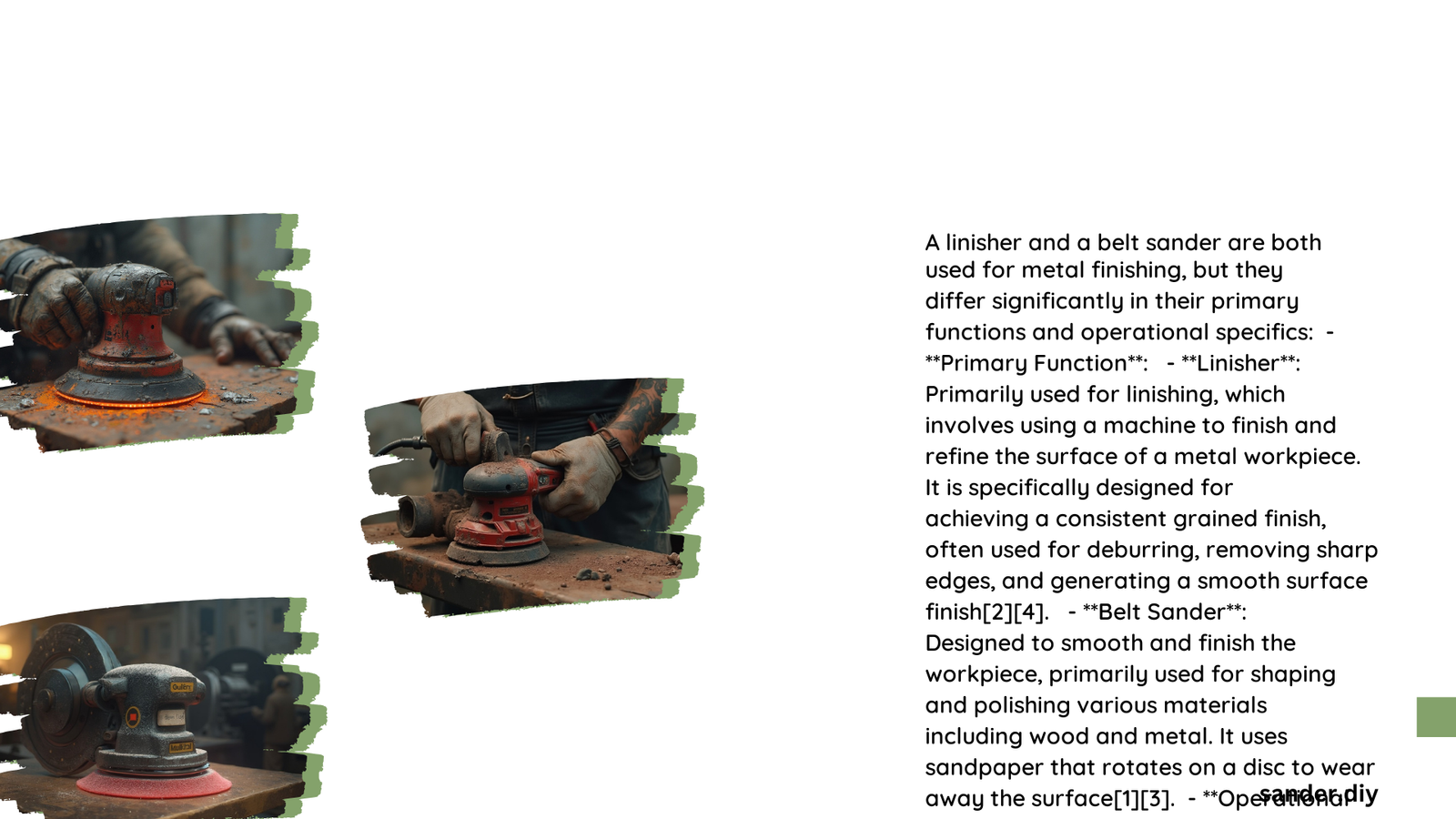Belt sanders and linishers are powerful abrasive tools with distinct characteristics that set them apart in performance, power, and application. While both devices utilize continuous sanding belts, they differ significantly in motor power, belt speed, material compatibility, and intended usage. Understanding these nuanced differences helps professionals and DIY enthusiasts select the right tool for specific projects, ensuring optimal results and efficiency.
What Makes Linishers and Belt Sanders Unique?
Power and Performance Comparison
| Feature | Belt Sander | Linisher (Belt Grinder) |
|---|---|---|
| Motor Power | 500-1200 watts | 1500-3000 watts |
| Belt Speed | 4500 SFPM | 7200 SFPM |
| Primary Material | Wood, Soft Metals | Heavy Metal Work |
How Do Motor Specifications Differ?
Belt sanders typically feature less powerful motors compared to linishers. A standard belt sander operates with motors ranging between 500-1200 watts, making them suitable for lighter tasks. In contrast, linishers boast more robust motors, often delivering 1500-3000 watts of power, enabling aggressive material removal and precision grinding.
What Are the Key Application Differences?
Wood Processing
- Belt sanders excel in woodworking
- Ideal for furniture finishing
- Smooth surface preparation
- Grit range: 120-220
Metal Fabrication
- Linishers dominate metal processing
- Aggressive material removal
- Tool sharpening capabilities
- Grit range: 36-220
Why Choose a Belt Sander?
Belt sanders offer several advantages for general users:
- Versatility: Works on multiple materials
- Portability: Lightweight design
- Cost-Effective: More affordable
- User-Friendly: Easier learning curve
Why Prefer a Linisher?
Linishers provide specialized benefits for professional metalworkers:
- High Removal Rate: Faster material elimination
- Precision Grinding: Accurate metal shaping
- Heavy-Duty Performance: Industrial-grade capabilities
- Robust Construction: Designed for intense use
How Do Operational Characteristics Compare?
Belt Speed Dynamics
- Belt Sander: Slower rotation (22.86 m/s)
- Linisher: Faster rotation (36.58 m/s)
Surface Area Coverage
- Belt Sander: Smaller contact area (50-100 cm²)
- Linisher: Larger contact area (240 cm²)
Technical Considerations for Selection
When choosing between a belt sander and linisher, consider:
– Project requirements
– Material type
– Desired finish quality
– Budget constraints
– Skill level
Maintenance and Longevity
Belt Sander Maintenance
- Lower maintenance costs
- Easier belt replacement
- Shorter belt lifespan
Linisher Maintenance
- Higher maintenance expenses
- Complex belt replacement
- Extended belt durability
Conclusion

Understanding the difference between linishers and belt sanders empowers users to make informed tool selection decisions. Each device serves unique purposes, with linishers dominating metal fabrication and belt sanders excelling in woodworking and general sanding tasks.
Recommendations
- Woodworkers: Invest in quality belt sanders
- Metal Fabricators: Choose robust linishers
- Hobbyists: Consider multi-purpose models
Pro Tips
- Always match tool to specific project requirements
- Invest in appropriate safety equipment
- Regular maintenance ensures optimal performance
